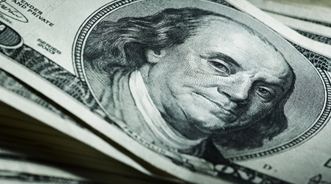Incentive Spending Hits Major Low in May; Blip on Radar or Ongoing Trend?

By subscribing, you agree to receive communications from Auto Remarketing and our partners in accordance with our Privacy Policy. We may share your information with select partners and sponsors who may contact you about their products and services. You may unsubscribe at any time.
SANTA MONICA, Calif. –
While analyses from two different firms point to differing perspectives on automaker incentive spending, one thing appears to be quite clear: automakers were quite averse to laying down incentives during May.
According to a report from Edmunds.com, they were particularly hesitant to put incentives on small cars as demand for these units climbed in light of high fuel costs.
Specifically, Edmunds pointed out that incentives on compact cars were down 23 percent on a month-over-month basis, while subcompact car incentives dropped 14 percent from the prior month.
Overall, incentives per vehicle sold dipped just 0.7 percent sequentially, coming in at $2,094, Edmunds shared. The level of incentives continues to sit in a trough not seen since 2005, the company noted.
Edmunds estimated that the industry’s aggregate incentive spending level dropped 5.8 percent month-over-month and came in at about $2.3 billion.
“The continuing market shift toward small fuel-efficient vehicles is keeping overall automaker incentives at the lowest levels we’ve seen in years,” explained Edmunds director of industry analysis Jessica Caldwell.
Subscribe to Auto Remarketing to stay informed and stay ahead.
By subscribing, you agree to receive communications from Auto Remarketing and our partners in accordance with our Privacy Policy. We may share your information with select partners and sponsors who may contact you about their products and services. You may unsubscribe at any time.
“These low incentives are making it increasingly difficult for consumers to find good deals on small cars,” she added. “But on the other end of the spectrum, we’re seeing better offers on large vehicles that have taken a hit in demand.”
Breaking it down by automaker, Honda’s incentives fell the furthest at 46 percent month-over-month. Honda — which Edmunds suggests seems the hardest hit by the Japan disasters — spent just $907 per vehicle sold on incentives, by far the lowest among the six largest OEMs.
There has been more than a $1,000 increase in the prices on both the Civic and Accord, the automaker’s most popular models, during the last two months, Edmunds said.
Incentive spending for Japanese automakers, as a whole, came in at $1,351 per vehicle sold, which was $334 short of April’s average.
“Interestingly, with the exception of Honda, we aren’t seeing a huge pullback of incentive spending by the Japanese automakers, which may indicate that they’re not quite as concerned about their supply as they were just weeks ago,” Caldwell explained.
“Toyota’s average incentive spending fell from April levels, but the company actually boosted incentive programs part way through May. And Nissan, in fact, increased its spending almost 10 percent,” she continued.
Besides Nissan, Chrysler (up 1.3 percent) and General Motors (up 11.9 percent) were the other top-six OEMs to increase incentive spending from April.
Ford was down 2.5 percent and Toyota dropped 26.6 percent.
Looking at individual brands, Edmunds discovered that the lowest incentives were found at Smart ($72 per vehicle sold), with Subaru in the second-place slot at $365 spent per vehicle sold.
Conversely, Edmunds found that the heftiest incentive-spending was at Saab ($5,137) and Cadillac ($4,714), respectively.
Smart’s incentive level was also at the bottom when viewing it as a percentage of sticker price (0.4 percent), with Porsche coming in second from the bottom at 1.2 percent.
Likewise, Saab also topped the proportional ranking (13 percent) and was followed by Chevrolet (11 percent).
TrueCar: Incentives Hit More Than Eight-Year Low
Meanwhile, TrueCar.com offered a different take on the state of incentive spending.
Vice president of industry trends and insights Jesse Toprak contends that the incentive level in May was the softest the industry has seen since November 2002.
However, he suggested that the valley is more like a blip on the radar and anticipates a hike this month.
Specifically, TrueCar’s analysis indicated that automakers spent an estimated average of $2,017 on incentives, which is 28.9 percent softer than the year-ago period and 13.1-percent less than April.
“Incentives are at their lowest in nearly nine years, but this is an anomaly and expect incentives to climb again in June,” Toprak stressed.
He also pointed out that light-vehicle transaction prices were the highest they have been in the U.S. since January 2002, when TrueCar began monitoring this data.
The average level came in at $29,817, a 2.1-percent year-over-year increase and a 0.7-percent hike from the previous month.
“Average transaction prices reached their highest levels ever recorded," Toprak said. “Even though consumers continued to move toward smaller vehicles, they also chose highly contented vehicles that are higher priced, keeping transaction prices high.”
Among the seven largest OEMs, Ford’s transaction prices during May were forecasted to have climbed the most on a year-over-year basis at 5.2 percent. With an average transaction price of $32,885, it trailed only GM ($33,883).
“Ford is a good example of a manufacturer that diversified its product portfolio to include more fuel-efficient vehicles while increasing market share and transaction prices," Toprak shared.


